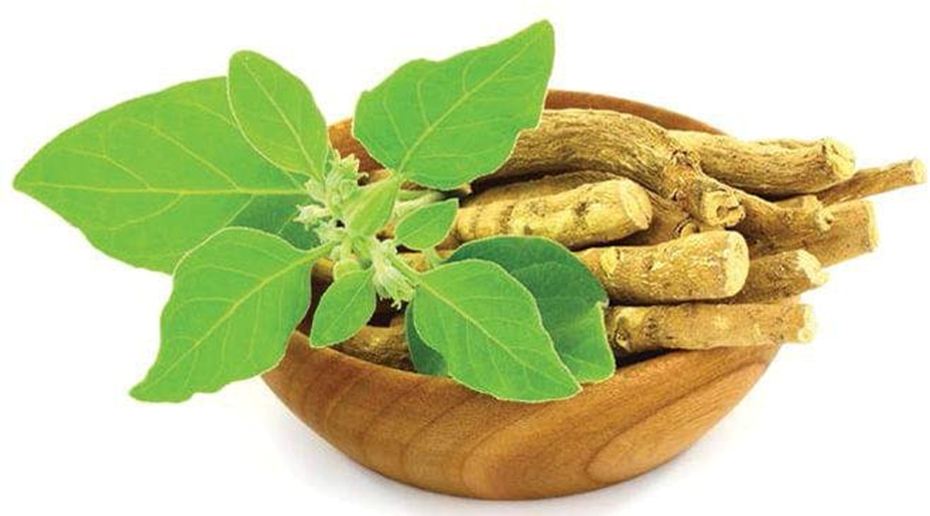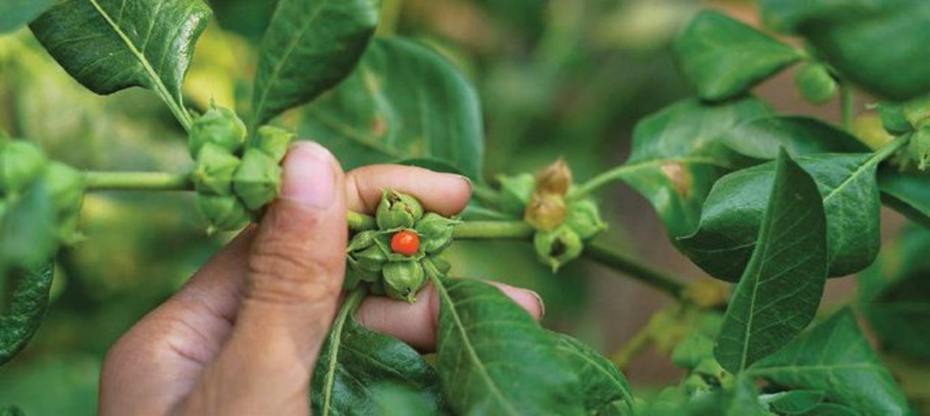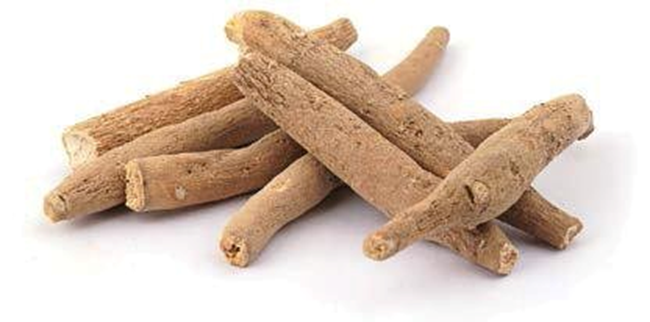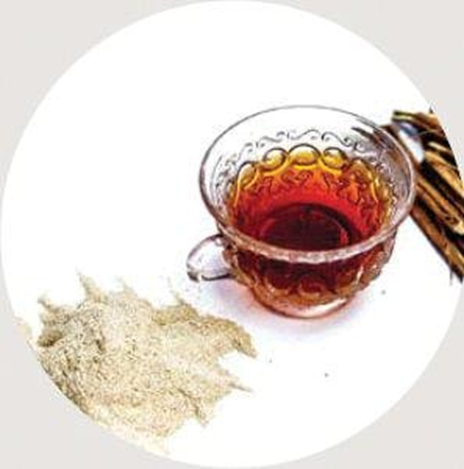
In our fast-paced lives, it is not surprising that we are always on the look-out for stress-relieving tonics and supplements. And so, we come to plant-based adaptogens that help your body with the effects of stress, anxiety and fatigue - all conditions apparent in a hectic lifestyle. One of these adaptogens is ashwagandha a plant that is surprisingly indigenous to South Africa as well as some Mediterranean countries, Africa, the Middle East and India. Here, it is also known as Ashwagandha plant, Indian ginseng or winter cherry, but it is not often found in a nursery. But here in onlineplantscart online plant nursery have ashwagandha plant (medicinal plant) available all time you can buy online ashwagandha plant and we deliver all over india.
Characteristics
Ashwagandha is a small shrub 1 x 2m high that looks similar to a gooseberry. The whole plant is a bit fuzzy with silver-grey hairs covering the stems and leaves. It flowers on the leaf nodes, producing small greenish-yellow flowers from October to June. It forms orange-red berries hiding under papery capes that are so distinctive in a gooseberry.
Properties
Ashwagandha contains more than 80 chemical compounds, mostly coming from the leaves and roots, that have various health benefits. Studies have revealed that this plant has antibiotic and anti-inflammatory properties and is also a sedative and diuretic amongst many others, making it effective for several ailments and often used as a general well-being tonic. It has been used in traditional medicine in India and South Africa for centuries, used for healing too many ailments to mention.
The root is the most used part of the plant. These are dug up in autumn and air-dried in a warm place until completely dry when it’s crushed into a powder to use. You can find capsules of ashwagandha plants online as a supplement at health stores and pharmacies.

Growing your own
With all its properties, it’s strange that the plant is not grown more in this country. It is not hard to grow and fairly easy going, so worth a try. They like warmer climates but will grow in any temperate environment.
Sow from seed: As plants are rare to find in nurseries, it’s better to sow from seed. Soak the seeds overnight in water and then spread over germination mix in seed trays. Keep the seeds moist and once the seeds have developed their first true leaves, they can be planted out into the garden or into containers. You can also sow seed directly into a well-draining, rich soil mix in the garden in spring.
Position: Full sun is best
Soil prep: Well-draining soil is the key with these plants, but they will do well with added compost and organic fertiliser when planting.
Water: Hydrate deeply about once a week. It prefers moderate water, but does not like to sit in waterlogged soil. They are drought-tolerant once established.
Feeding: These are hungry plants and will do well with a regular feeding schedule of organic fertiliser every 4-6 weeks. Avoid chemical fertilisers that may interfere with the roots if you are planning to harvest for medicinal use. Add a layer of compost as a mulch to add extra nutrients.
Pruning: Like other gooseberry plants, they may become leggy and need staking. Prune the tips of the stems when they are young to promote bushier plants and remove any damaged or yellowing stems and leaves.
Fun facts
It was noted on the traditional uses of Withania somnifera by B. Maquire (Namibia 1953) that “the fruits and flowers are used by Bushmen for ‘charm’ purposes in lion hunting.”
The name Ashwagandha is based on the Sanskrit word ‘ashva’ meaning horse and ‘gandha’ meaning smell. This relates to the fact that the root smells like a horse. The Latin has another meaning – somnifera meaning ‘sleep-inducing’, referencing its calming narcotic qualities.
It was discovered when Tutankhamun’s tomb was unveiled that a treasure of botanical plants was arranged around the Pharaoh’s face. Interestingly, this pinpointed the time of the year the Pharoah was buried and out of the nine different plants found, Withania somnifera berries were included.

Harvesting
After the plant starts producing berries in autumn, the root can be harvested. Dig up the plant carefully with a garden fork and shake off any excess soil. The leaves and berries can also be harvested for use in teas.
Prepare the roots by washing any dirt off and lightly brushing away dirt with a scrubbing brush, under running water. Pat dry and leave to air dry for a few hours. Using a vegetable peeler, take off the outer layer of the root, exposing the useful inner section. Chop the root into small pieces and use fresh; dry by using a dehydrator or placing in the sun and grinding into a powder; or adding alcohol to make a tincture that is allowed to infuse for 4-6 weeks in a dark place.

Uses
This herb is not used much in cooking because it has a bitter taste that is not easy to disguise in any good way. However, fresh root is often made into a tea with honey and lemon added. Let the root sit in boiling water for 10 minutes and then strain out the root before adding a bit of sweetness to taste.
In order to not taste the bitter root at all, add the powdered root to empty capsules you can buy online or from the pharmacy. NB: If you are preparing the root for use as a medicine, please consult your doctor beforehand. Although relatively safe to use, some people may experience side effects and it has been known to lower blood pressure and blood sugar levels that will need monitoring.



